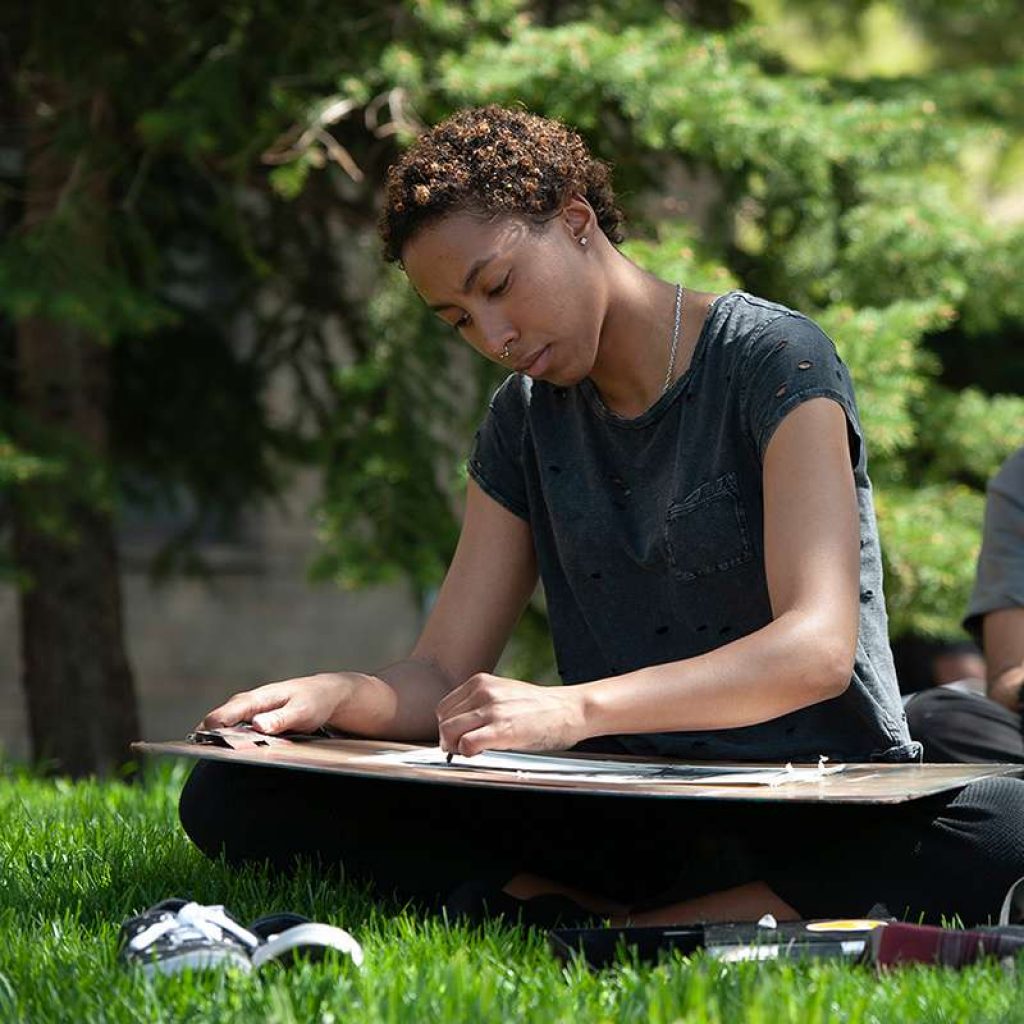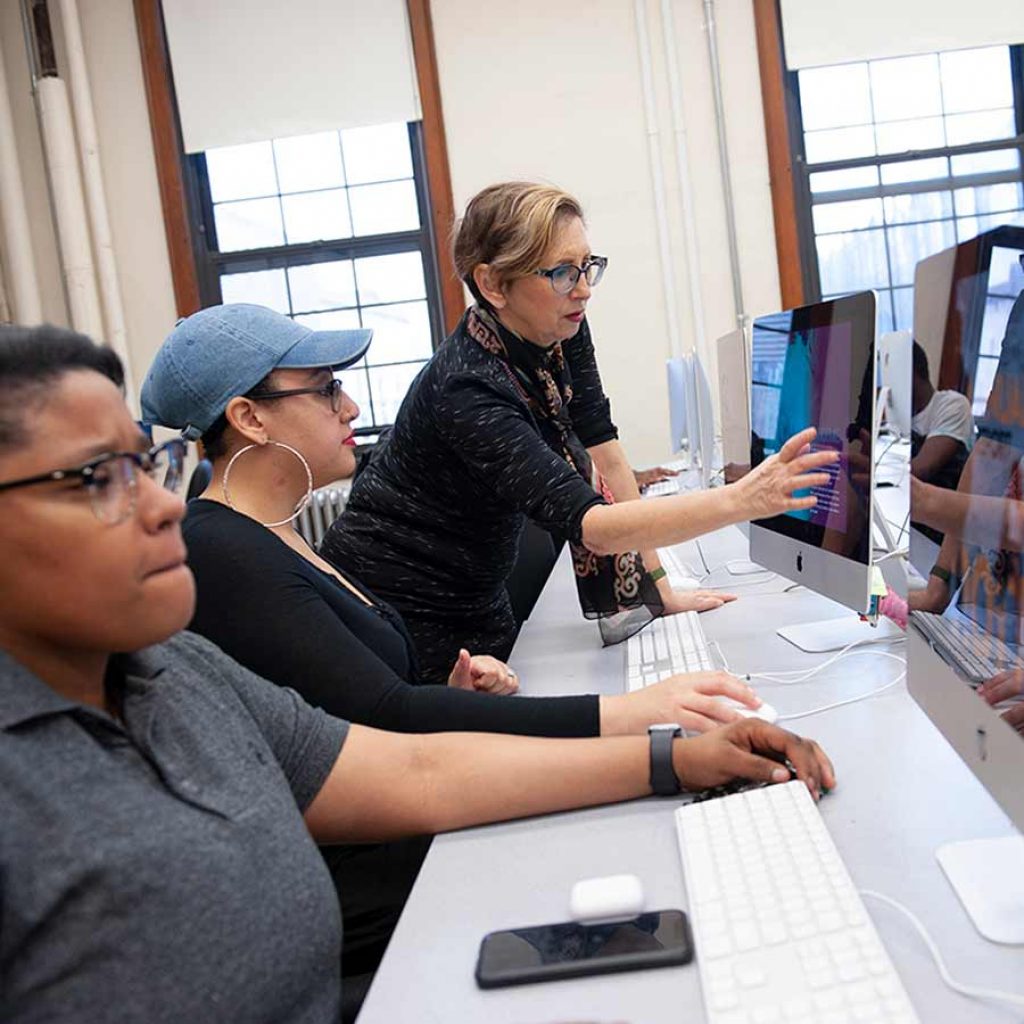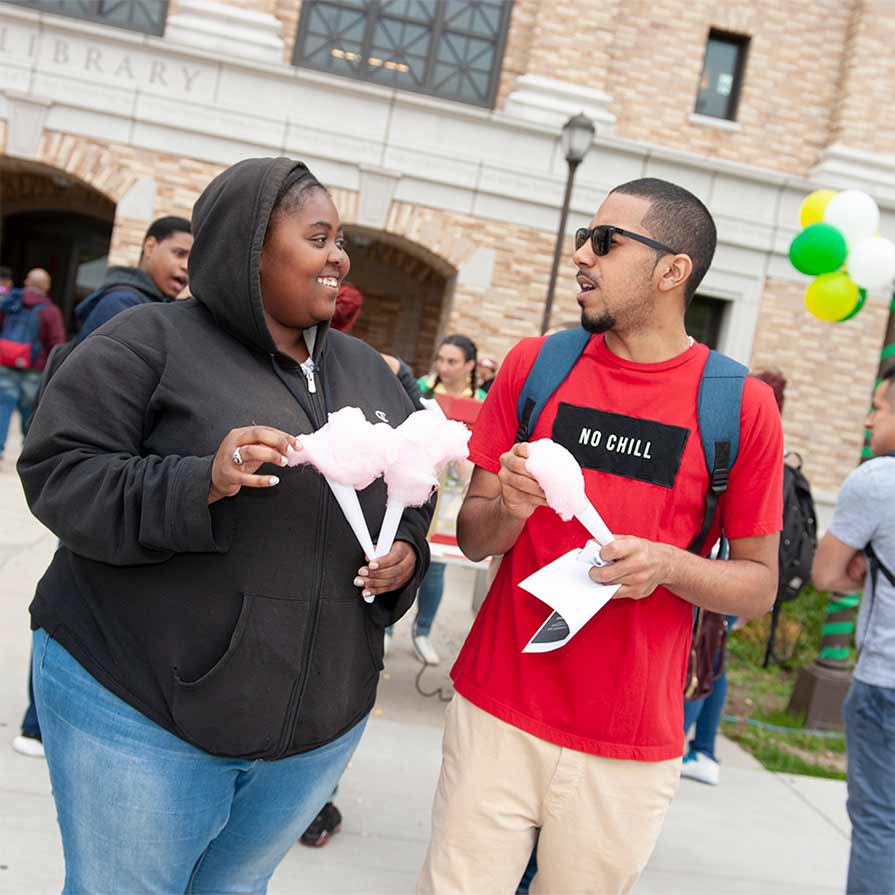Welcome
to the Art & Music Department
The Art and Music Department offers a variety of courses in art history, studio art, digital and web design, music history, music technology and performance. We run a tutorial lab in Bliss 302 and oversee our art, CAMEO and music student clubs.
The department also manages the Hall of Fame Art Gallery and regularly presents art and music events on campus and online.
NEW – Digital Design AAS Online program! For more information click here
We offer two associate degree programs:
Associate in Applied Science (A.A.S.) in Digital Design degree program prepares students to go on to careers in digital, web and graphic design. The program has articulation (transfer) agreements with several colleges.
Liberal Arts & Sciences Associate in Arts (A.A.), Studio Art Option is a fully transferable degree that introduces the visual arts: learn to paint, draw, and select from a wide variety of art classes.
Contact Us
Main Office:
Bliss Hall [BL], Room 303
Phone: 718-289-5341
CUNY Office Assistant:
Jasmina Betances
Jasmina.Betances@bcc.cuny.edu
Music Office:
Guggenheim Hall [GU], Room 203
Phone: 718-289-5252
Chairperson:
Prof. Roni Ben-Nun
Bliss Hall [BL], Room 301
Phone: 718-289-5561
Roni.Ben-Nun@bcc.cuny.edu
Deputy Chairperson:
Dr. Anne Vuagniaux
Bliss Hall [BL], Room 305
Phone: 718-289-5100 Ex. 3047
Anne.Vuagniaux@bcc.cuny.edu
A.A.S. Digital Design
Program Director:
Prof. Lisa Amowitz
Bliss Hall [BL], Room 311
Phone: 718-289-5344
Lisa.Amowitz@bcc.cuny.edu
Department News
FACULTY SCHOLARSHIP
Dr. Deborah Lewittes publishes book chapter and receives grants to fund new research
Deborah Lewittes’s peer-reviewed essay, “Tectonics: Berthold Lubetkin and Formalism in Mid-Century London,” will be published in Iolanda Plescia and Emilia Di Rocco, eds., Rethinking Modernism (Rome: TAB Edizioni, forthcoming, Spring 2025). She has been awarded two new research grants as well. To support travel to France and St. Thomas, Dr. Lewittes received funding from the PSC-CUNY Research Foundation for her project “The Blue Light of the Open Sea: Pissarro, Paris, Plein Air Painting, and the ‘Port Jews’ of the Caribbean.” The Memorial Foundation for Jewish Culture has also awarded her a Fellowship Grant to support travel to Israel for her project “Bauhaus, Haifa, Kibbutz: The Modernism of Munio Gitai Weinraub.”
Rhoda Terry-Seidenberg delivers paper for the Black Doll Symposium at the National Museum of Toys and Miniatures, Kansas City, MO
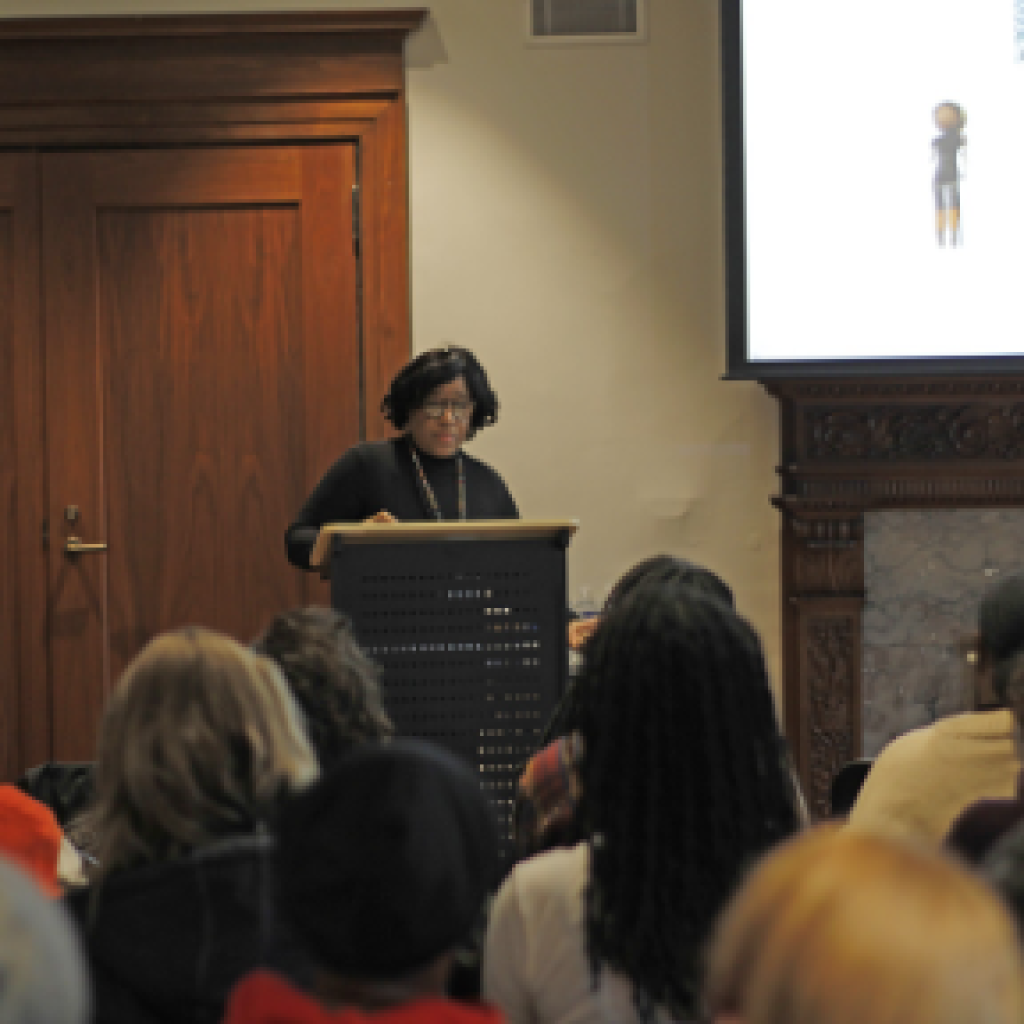
Continuing her research on Black dolls as seen through the European eyes, Rhoda Terry-Seidenberg, presented a paper on coconut-head dolls at the National Museum of Toys and Miniatures in Kansas City. The event brought together scholars from different disciplines tackling the difficult discussion of slavery through the lens of Black dolls. The symposium accompanied the museum’s current exhibition, Portraits of Childhood: Black Dolls from the Collection of Deborah Neff, on view until March 3, 2025.
FACULTY CREATIVE WORK
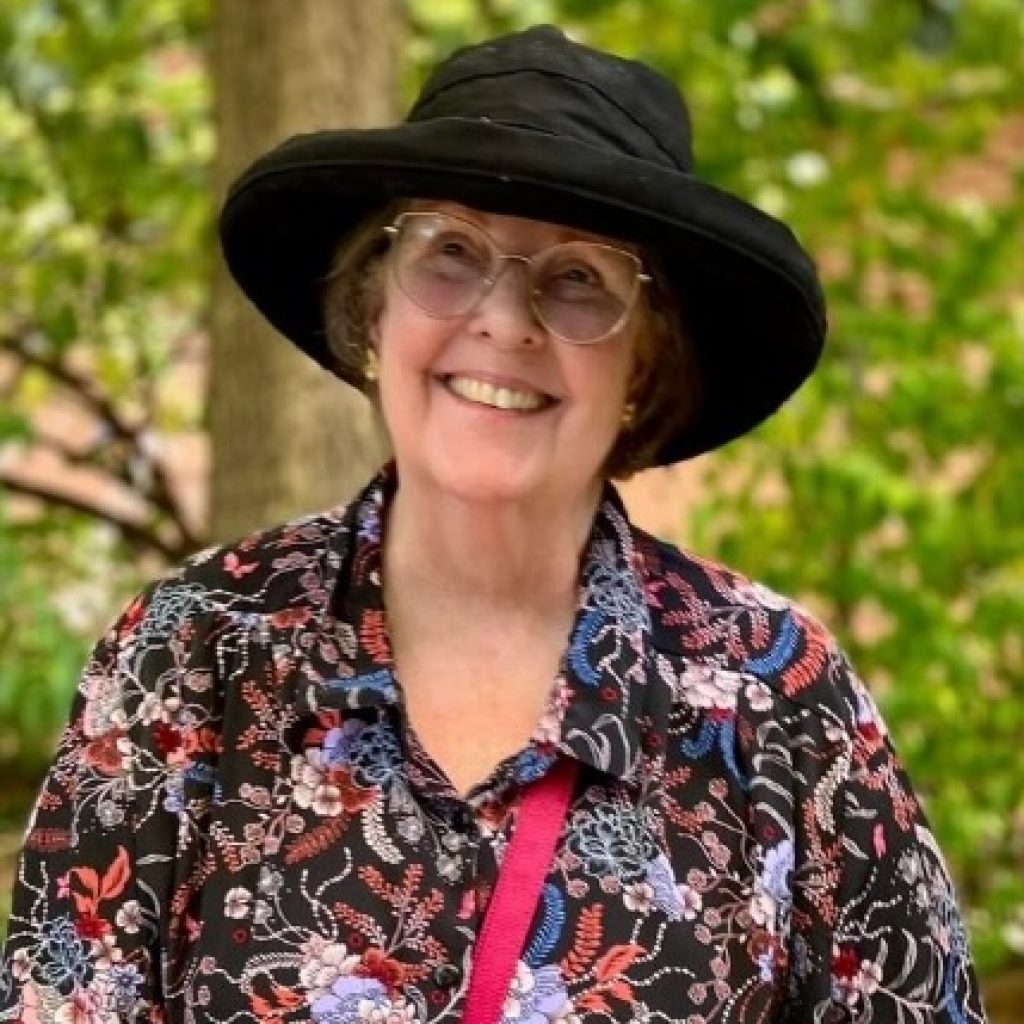
Noëlle King exhibits and publishes work; secures Moon Tree for BCC campus
Noëlle King exhibited her work in two 2024 exhibitions –– Anthropology of Motherhood: Kinship and Othermothering at the Byham Theatre, Pittsburgh, PA, and Little Luxuries at the Main Line Art Center in Haverford, PA. She recently had another work, “The Frost that Touches the Bark and Goes,” published in Plant Perspectives 1: 219–220. Noëlle is also responsible for securing Bronx Community College’s very own Moon Tree. She applied to NASA to receive the American Sycamore seedling, which flew around the Moon on the Artemis I mission in 2022. The tree was planted on May 7, 2024, and can be seen on Ohio Field.
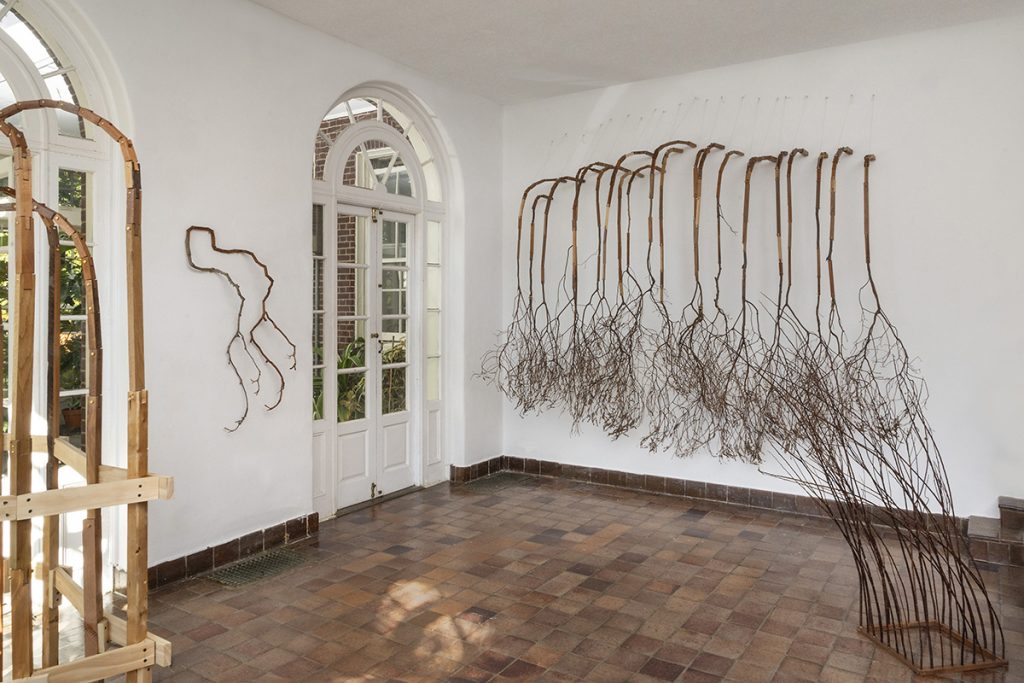
Image caption: Stephanie Beck, Bough, 2024. Photo: Stefan Hagen, courtesy of Wave Hill.
Stephanie Beck presents solo exhibition at Wave Hill’s Sunroom Project Space
Stephanie Beck presents solo exhibition at Wave Hill’s Sunroom Project Space
Stephanie Beck presented Bough, a solo exhibition at Wave Hill’s Sunroom Project Space from October 19 through December 1, 2024. Beck’s exhibition spoke to our complicated relationship with the natural world, specifically plants and birds. The display included abstract sculptural “drawings” created from hinged lines of wood connected to natural material collected at Wave Hill. The pieces explored the manipulation of plants through grafting, tying, and cutting –– practices that can both destroy ecosystems and rejuvenate threatened species. The exhibition also included an interactive sound piece of the songs of eight endangered regional migratory birds. The birdsongs were connected to a motion detector that stopped the sound once a visitor entered the exhibition space. Visitors had to remain still to hear all eight birdsongs, reflecting the need for humans to stop our destructive actions in order for the natural world to survive.



